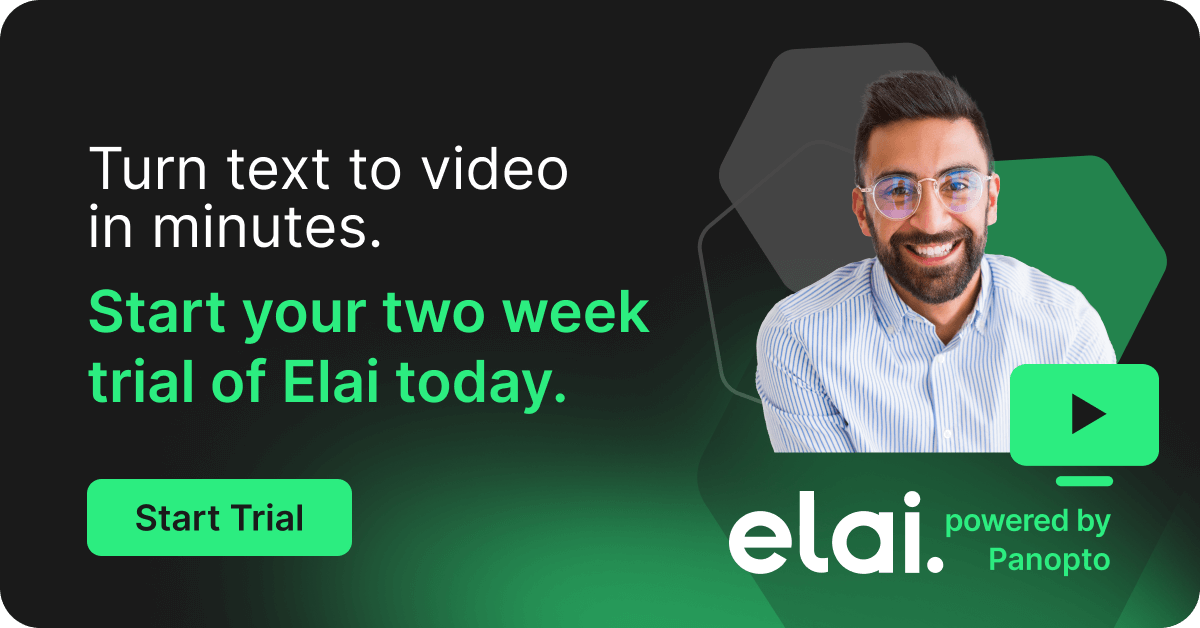- Uncategorized
Students at Copenhagen Business School have embraced lecture capture
– and the numbers show it.
CBS has been using the Panopto video platform to record its lectures since 2013, building on earlier lecture capture initiatives. The rationale for introducing lecture recording at the institution was twofold. Firstly, CBS wanted to be able to offer resources that would enhance the overall learning experience for all of their students. Secondly, they wanted to provide a ‘catch-up’ service for anyone unable to attend class.
 Building on the successful implementation of Panopto and the positive experience of early adopters, increasing numbers of CBS academics are starting to see the benefits of recording their lecture content. Accordingly, the amount of courses being recorded has risen year-on-year. The growth in the number of departments offering lecture capture has also been mirrored by growth of a different kind – a massive increase in views of the recorded content by CBS students compared to previous years.
Building on the successful implementation of Panopto and the positive experience of early adopters, increasing numbers of CBS academics are starting to see the benefits of recording their lecture content. Accordingly, the amount of courses being recorded has risen year-on-year. The growth in the number of departments offering lecture capture has also been mirrored by growth of a different kind – a massive increase in views of the recorded content by CBS students compared to previous years.
The growth of lecture capture at CBS
According to the viewing analytics for 2015, the number of views per course rose dramatically in almost all of the courses recorded when compared to 2014 figures. For instance, in the course ‘Theoretical Positions’, viewing minutes increased from 25,000 in 2014 to 77,500 in 2015.
The institution wanted to ask their students directly what they thought of lecture capture to understand the drivers behind its popularity – so they sent out a survey.
Why CBS students want access to recorded lectures
The survey was distributed to students on the two courses that had seen the biggest viewing increases – ‘Theoretical Positions’ and ‘Strategic Communications’. The questions were designed to give the university insights into students’ reasons for using the recordings and their opinions on how lecture capture has helped them in their studies.
So, why were they using the recordings so much? The responses identified four main reasons:
First, the recordings helped them control or regulate their learning pace. This in turn enabled them to take better notes, as they were able to pause or revisit lectures. Noted one student, “It was nice to take notes again if something was missed in class.”
Second, they wanted the option to consolidate their knowledge when they found a course particularly difficult, or if there were specific topics that they hadn’t absorbed during the live lecture session. As another student put it, “It was a good way to refresh the lecture, if there was something I did not understand during class. It is easier to understand complicated points in the lectures if you watch them again.”
Third, many students felt that viewing lecture recordings was one of the best ways they could revise for exams. One student’s feedback: “For the exam, I watched specific lectures as I forgot some definitions, which I wanted to use in my exam paper.”
And fourth, some had simply missed a lecture and found video to be an invaluable way to catch up. One student’s note was typical: “I had some overlapping courses last semester, which meant that I was very glad that the lectures were accessible online.”
First and foremost: lecture capture is about flexibility
The common theme that united most of the student responses to lecture capture was flexibility. The students framed this concept in several different ways. They enjoyed the flexibility lecture capture offered them in terms of allowing them to balance conflicting priorities. They appreciated the flexibility of being able to watch lectures even when ill or abroad. And they felt they benefited significantly from the flexibility of being able to follow the content at their own pace.
In one student’s own words: “Lecture capture gives much better flexibility to still ‘attend’ all classes even though you cannot show up in person, (because the courses are overlapping).”
Importantly, they didn’t see lecture recordings as an excuse to not physically attend the lecture, but either as a supplement to the face-to-face session or as a useful way to boost their learning if they had been unable to attend due to scheduling conflicts or illness.
Enhancing student satisfaction
Given the number of different ways in which lecture recording has helped CBS students with their studies, it’s not surprising that they were extremely positive about the technology. As one student commented: “The lecture recordings helped me a lot. I got all the key points and a better understanding, as I was able to pause, rewind and so on.”
In fact, it has proved so popular that students expressed active disappointment when other modules they were taking weren’t recorded. One student commented: “Sometimes you just can’t attend (the class) because of several different reasons, including illness, and I think that if you have the will to learn you should have the opportunity to do so. We have the technology, why not use it?”
Overall, the message from the student survey is clear – this generation of students immensely appreciates the flexibility afforded by lecture capture technology and they see it as a great tool to assist their learning.
When asked if they felt lecture capture technology had improved their ability to learn and whether it should be adopted more widely, the students’ responses were unequivocal:
- “All lectures should be recorded, it’s a really big help when you study for the exam.”
- “The videos allow the student to study much more thoroughly.”
- “Please, please, please: Make this a common thing in ALL lectures!”
About the University
Copenhagen Business School (CBS) is one of the largest business schools in Europe and one of the eight Danish universities. Established in 1917, CBS employs 1,500 members of staff and offers undergraduate and postgraduate study programmes to over 20,000 students.
Keep reading!
Download the new Copenhagen Business School Panopto case study today.




